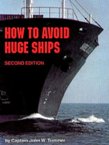warspite1
Posts: 41353
Joined: 2/2/2008
From: England
Status: offline

|
I am surprised that you say the Flying Squadron "doctrine" dates from the twenties. No doubt different names are given for various plans and studies but as far as I was aware the term 'Flying Squadron' in this form was first used in an official planning document only as late as 1939.
In addition, the global situation in the twenties - no German Navy and no Italian Navy to speak of - meant that only the Japanese Navy (of those countries reasonably likely to be hostile) was a threat, and of course whilst the treasury would not want a large battlefleet overseas for any length of time, the deployment of such a fleet (with maybe an advance force in the vanguard) in the event of war would not prove difficult given the lack of other threats closer to home. The very real, some would say insurmountable, problems of overstretch came later.
A Flying Squadron, and what that composed of, or indeed where it would need to be based, was never properly identified (for the reasons set out in post 16). It was one of the options considered during the first two years of war as a means of deterring Japan and, as you say, re-assuring the Dominions. But there was no hard and fast "doctrine" that meant a Flying Squadron had to be sent (as opposed to something larger if circumstances permitted - or indeed nothing at all if, god-forbid, things had really turned pear-shaped) that was set in stone pre-Pound and Churchill and that they were unwittingly wedded to.
Of course a Flying Squadron was never meant to be able to defeat a Japanese fleet, but then until a volte-face in policy - R-Class? Really? - the RN were not supposed to fight north of Singapore until a proper, balanced fleet was available.
< Message edited by warspite1 -- 5/22/2017 8:36:31 PM >
_____________________________
England expects that every man will do his duty. Horatio Nelson October 1805  |
 Printable Version
Printable Version







 .
. 









 but that has nothing to do with certain people saying, after the sinkings, that if only Indomitable hadn't run aground, she would have been with them. The two don't appear to follow given the timings and the lack of proof (unless Boyd is wrong) that she was meant to be.
but that has nothing to do with certain people saying, after the sinkings, that if only Indomitable hadn't run aground, she would have been with them. The two don't appear to follow given the timings and the lack of proof (unless Boyd is wrong) that she was meant to be. 
 New Messages
New Messages No New Messages
No New Messages Hot Topic w/ New Messages
Hot Topic w/ New Messages Hot Topic w/o New Messages
Hot Topic w/o New Messages Locked w/ New Messages
Locked w/ New Messages Locked w/o New Messages
Locked w/o New Messages Post New Thread
Post New Thread